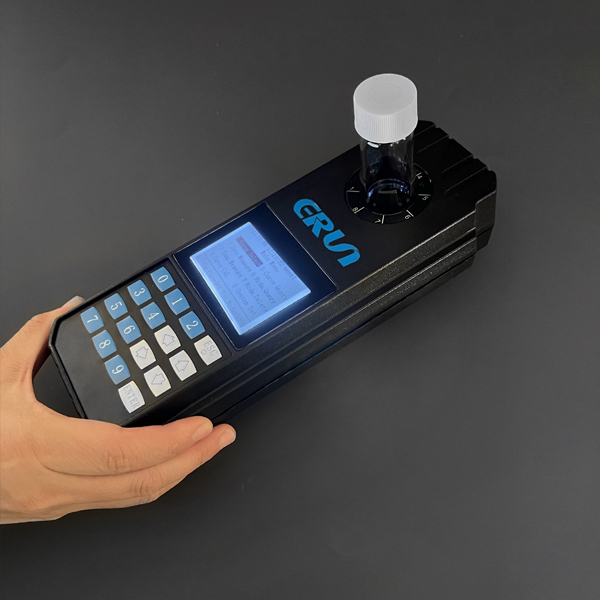Among the many tasks of environmental protection and water pollution monitoring, the determination of phosphate in water quality is a crucial task. As one of the main causes of eutrophication of water bodies, the level of phosphate is directly related to the health of water resources and the balance of the ecosystem.

There are many methods for phosphate determination, including spectroscopy, titration, chromatography, etc. Among them, spectroscopy is widely used in rapid detection in laboratories and on-site due to its simple operation and accurate results. The concentration of phosphate is quantitatively analyzed by the absorption of light at a specific wavelength. This method scientifically combines chemical analysis with modern instrument technology.
In terms of standardized operating procedures, the determination of phosphate follows a series of strict preliminary preparation, sampling, storage and analysis steps. Staff need to collect representative water samples according to the procedures to avoid sample deterioration or contamination during storage and transportation.After the sample is collected, it must be sent to the laboratory for analysis within the specified time to ensure the accuracy of the measurement results. In the laboratory, sample pretreatment includes filtration, dilution and other steps to eliminate interference factors and improve the accuracy of the analysis.
Accuracy and precision are the core requirements for phosphate determination. Accuracy refers to the degree of consistency between the measured value and the true value, which determines the credibility of the measurement result. Precision describes the degree of dispersion between repeated measurement values, which is related to the stability of the results. To ensure these two indicators, the laboratory needs to use qualified reagents, strictly follow the standard operating procedures, and calibrate the instruments regularly.
In terms of quality control and assurance, the determination of phosphate must comply with internal and external quality control strategies. Internal quality control includes the use of quality control samples, parallel sample determination and other means to monitor the stability and reliability of the method. External quality control involves cross-laboratory comparisons, participation in proficiency verification by authoritative organizations, etc., to ensure the consistency and comparability of data between different institutions.
The evaluation and interpretation of phosphate determination results is the final step of the entire workflow. The determination data needs to be compared with relevant water quality standards, such as surface water environmental quality standards, sewage discharge standards, etc., to assess the nutrient status and pollution level of the water body. When the phosphate content exceeds a certain threshold, it means that there may be environmental pollution problems and control measures need to be taken in a timely manner.
The factors that cause excessive phosphate and its impact are issues that need to be explored in depth. Natural background values, agricultural non-point source pollution, domestic sewage and industrial wastewater discharge are the main factors that lead to excessive phosphate. Excessive phosphate will not only cause excessive algae growth, reduce water transparency, consume dissolved oxygen, but also affect the survival of aquatic plants and animals, thereby destroying the ecological balance.
In terms of prevention and control and management measures, reducing phosphate emissions is the key. This needs to start from the source, such as improving agricultural production methods and using fertilizers rationally; improving the efficiency of phosphorus removal in urban sewage treatment; and implementing stricter wastewater treatment standards in industrial parks. At the same time, we need to increase environmental law enforcement efforts, effectively supervise and punish illegal emissions, and ensure the health and safety of water bodies.
The determination standard of phosphate in water quality is not only a set of scientific operating procedures, but also an attitude of environmental responsibility.The portable water phosphate meter ERUN-SP-YP850 developed and produced by Yingrun Environmental Protection is a new type of intelligent portable water quality analysis instrument. It uses a monochromatic cold light source and a microcomputer to automatically process data and directly display the phosphate concentration value of the water sample. It is widely used in the determination of drinking water, surface water, ground water, sewage and industrial wastewater.
